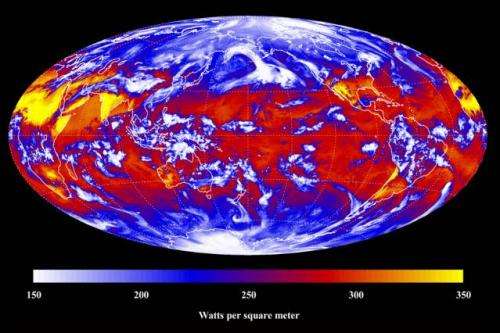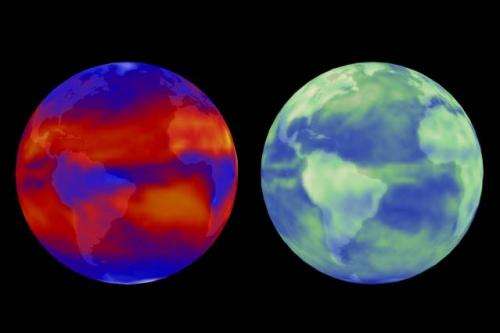Global warming not just a blanket: In the long run, it's more like tanning oil

While computer models churn out bleak forecasts for the planet's future, we also have a more conceptual understanding of what is happening as humans pump carbon dioxide into the air. But the conceptual understanding of carbon dioxide wrapping the planet in a blanket that traps more heat is not quite right.
A new study from the University of Washington and the Massachusetts Institute of Technology hopes to complete the understanding of what happens to the planet under climate change. Instead of carbon dioxide, or CO2, creating a blanket to slowly warm the planet, a paper this week in the Proceedings of the National Academy of Sciences shows the story is a little more complicated - though the ending is, unfortunately, the same.
"This is a neat study in that it changes the way we think about the climate system," said lead author Aaron Donohoe, a postdoctoral researcher at MIT who is now beginning as a research associate at the UW's Applied Physics Laboratory. "We looked at processes that are well captured in the models, but the conceptual understanding of how they work hasn't been fleshed out before."
When CO2 is first added, it does act as a blanket, trapping long-wave infrared energy coming off the Earth. The atmosphere then emits less of this long-wave radiation to space because the upper atmosphere is cooler than the Earth's surface, just as the top of your blanket is cooler than your body. But the Earth gradually heats up under this blanket, and hotter objects emit more long-wave radiation, so within about a decade the effect of adding the thicker blanket has been canceled by the warmer body emitting more energy.
So what keeps the planet warming after the first decade? In the longer term, the study shows that the Earth begins to absorb more shortwave radiation - the high-energy rays coming directly from the sun.

Previously people had shied away from talking about shortwave radiation because clouds can reflect this visible light back to space, and clouds remain one of the big unknowns under climate change.
Regardless of what happens to clouds, these researchers say, the planet is likely to have less ice and the air will become more humid under climate change, both of which will act to absorb more shortwave radiation from the sun. Those effects will be like putting tanning oil on the planet, letting it absorb more of the sun's incoming rays.
Melting ice creates darker surfaces that can absorb more heat, and the more melting the more heat it can absorb. Likewise, warmer air holds more water vapor, causing it to absorb solar radiation that might otherwise bounce back off clouds, ice or snow.
"While greenhouse gases trap one type of radiation, it's the other type - visible, shortwave radiation - that is really sustaining global warming over the long term," said co-author Kyle Armour, a postdoctoral researcher at MIT who will join the UW faculty this fall with a joint appointment in oceanography and atmospheric sciences.

The result could help people better conceptualize global warming. It could also help better detect climate change in satellite data, which can measure both shortwave radiation reflected by the Earth and long-wave radiation emitted by the Earth.
Most of the study's simulations involved a one-time addition of carbon dioxide into the atmosphere. One scenario simulated continuously increasing CO2, as is happening now - in that case, the long-wave radiation effect lasted about 20 years before the shortwave effect took over.
"Our results do not change our overall expectation that the planet will continue to warm due to the burning of fossil fuels, but they do change our fundamental understanding of how that warming comes about," said co-author David Battisti, a UW professor of atmospheric sciences.
The study supports what scientists are seeing in models and observations, Battisti added.
More information: Shortwave and longwave radiative contributions to global warming under increasing CO2, www.pnas.org/cgi/doi/10.1073/pnas.1412190111
Journal information: Proceedings of the National Academy of Sciences
Provided by University of Washington




















